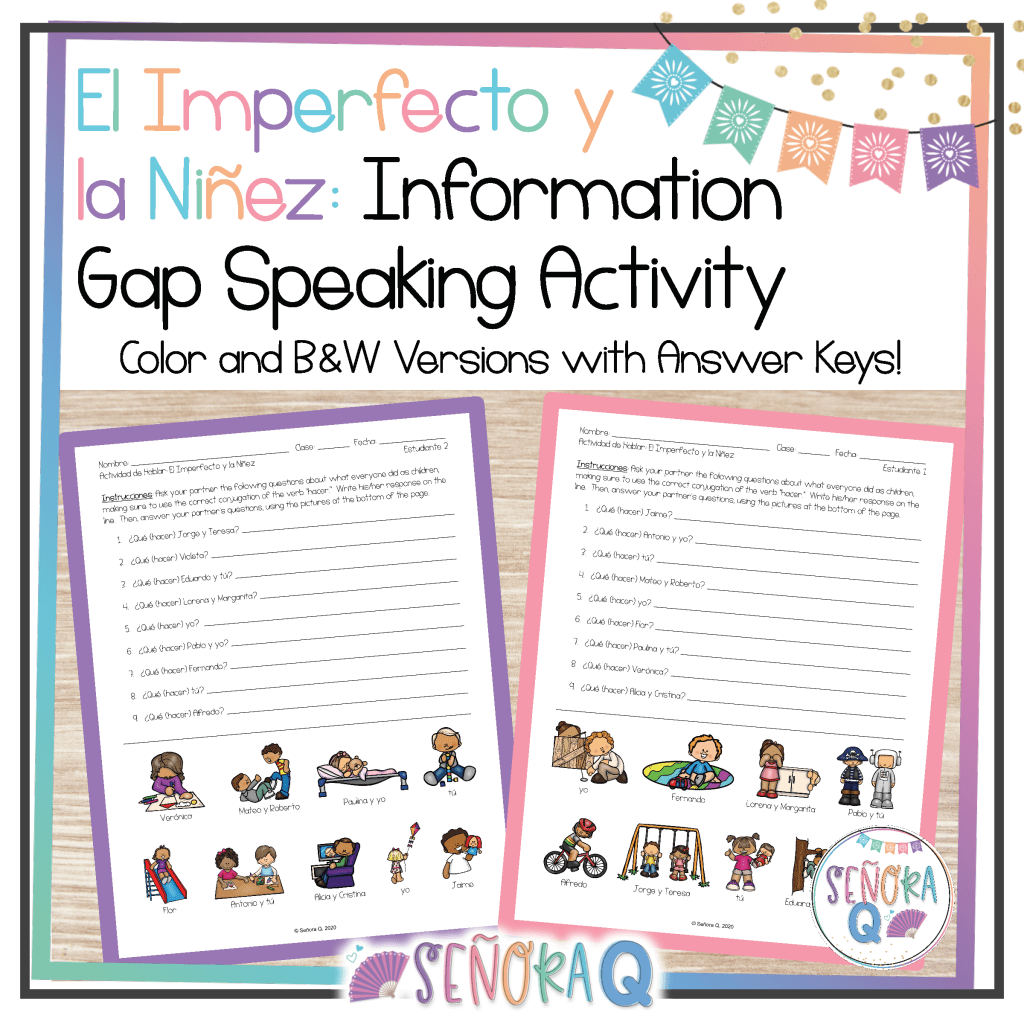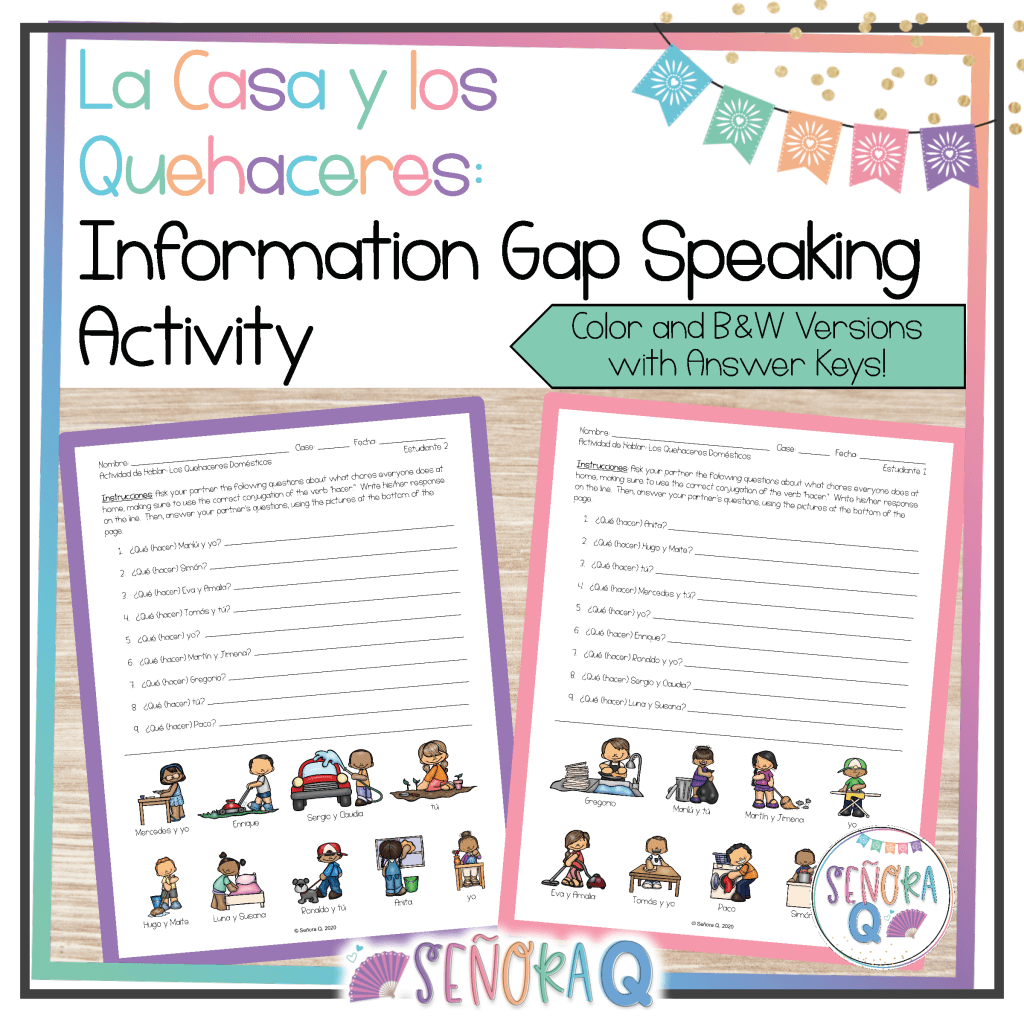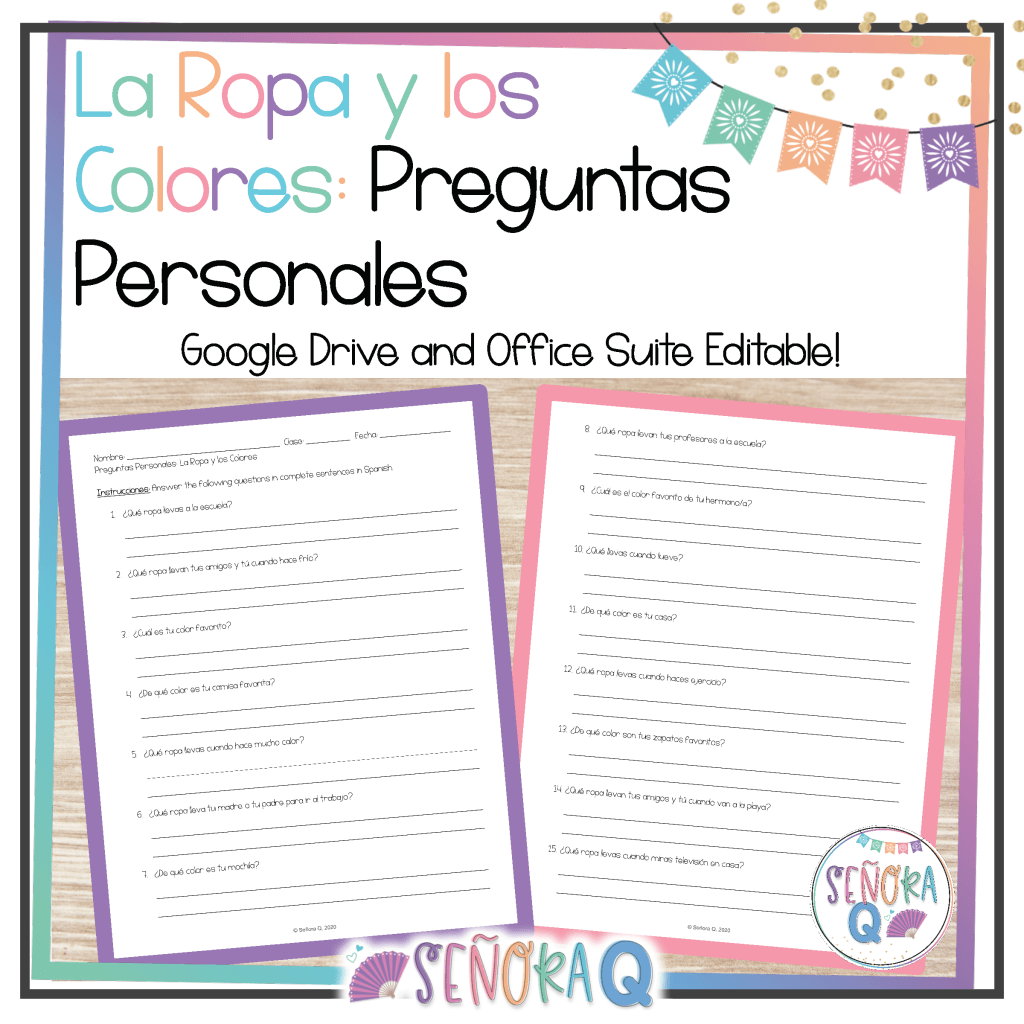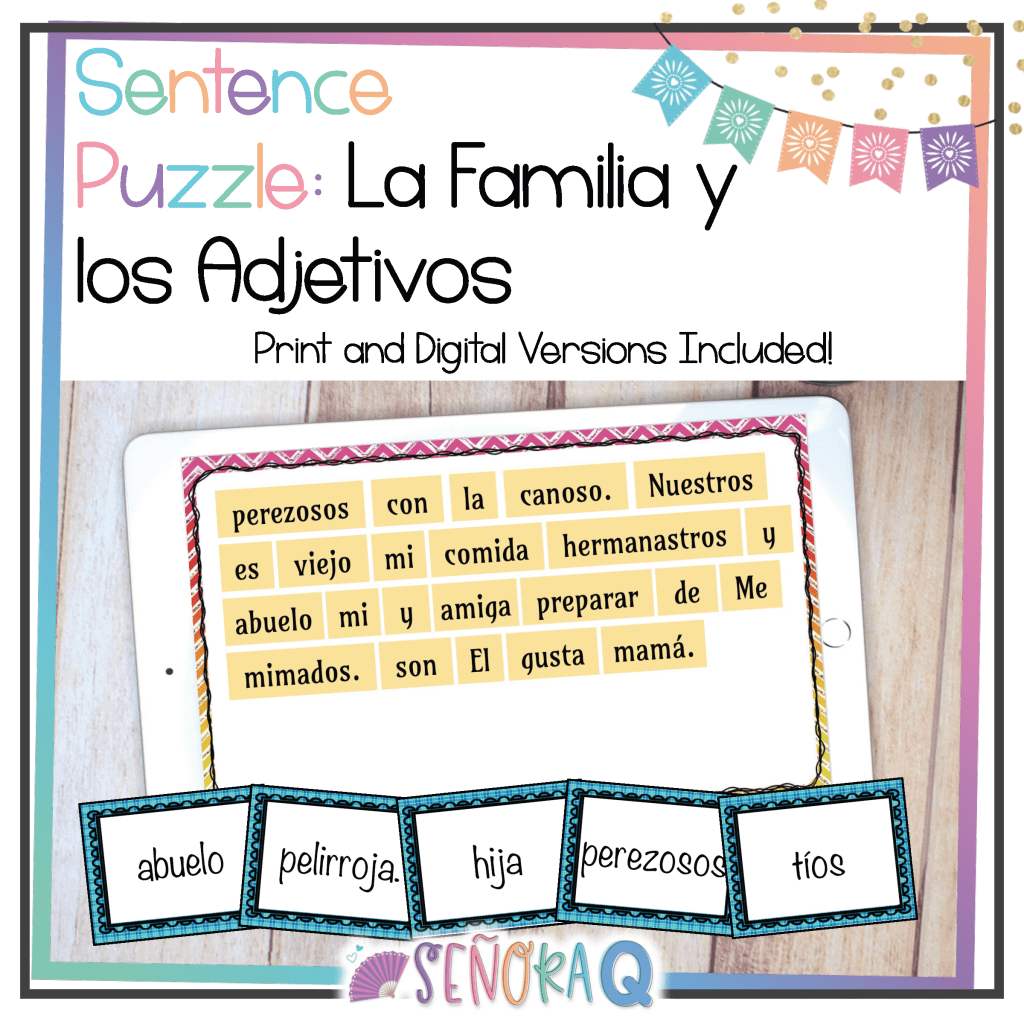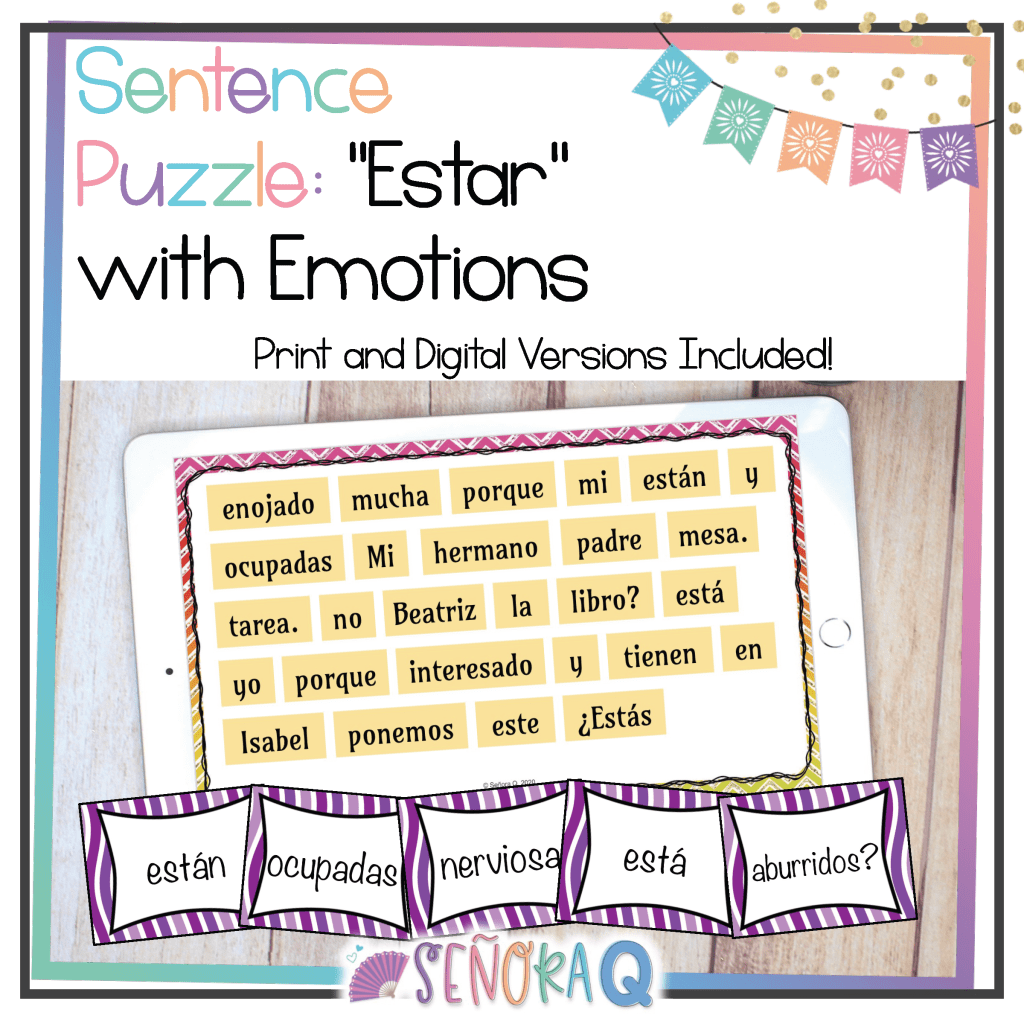

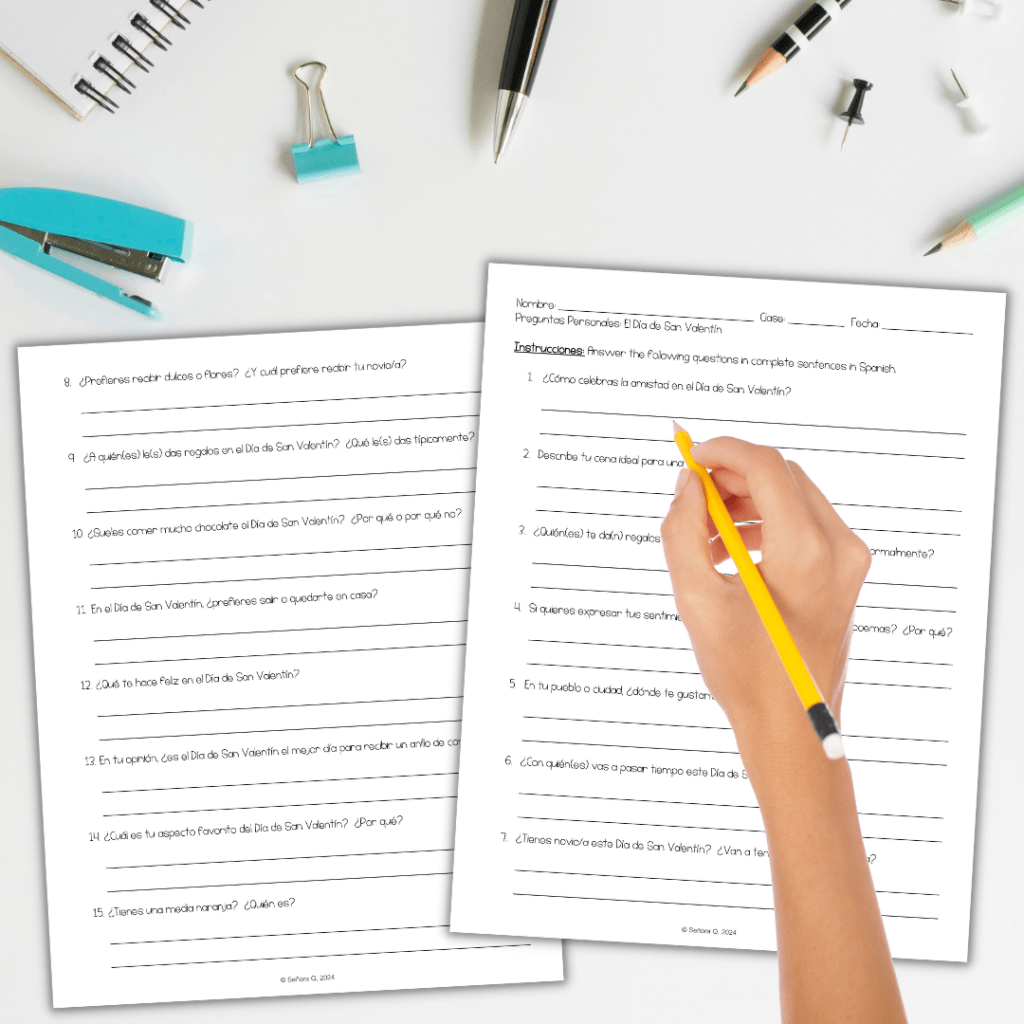
¡Hola profes! I hope you’re doing well! Do you have spring break coming up this week? If so, I hope you have a great time – you deserve it! If you don’t have spring break this week, hang in there! You’ve got this!
I don’t know about you, but nothing makes me more uncomfortable than a silent classroom. On the other hand, I’m at my happiest when my students are working together, using their Spanish to complete activities cooperatively. So, This week, I thought I would share my favorite partner and group activities that I use all the time!
#1: Information Gap Activities
Information gap activities are versatile, easy to make, and are a great way to get your students speaking Spanish and working collaboratively together! These activities require students to speak to a partner to ask for and share information. Each partner has a half-complete paper, and so the students must speak to each other to get the missing information. They are easy to create, provide scaffolding for students, and work with virtually any topic!
When I create information gap activities, I will typically put 8-10 questions at the top of the paper. Each partner has a different set of questions. For example, if we’re studying places in the school, I would write a question like, “¿Dónde está Marta?” on Estudiante 1’s paper.
Then, underneath the questions, I put picture prompts that students will use to answer their partner’s questions. So, on Estudiante 2’s paper, I would write Marta’s name and have an image of a cafeteria under it. So, when Estudiante 1 asks, “¿Dónde está Marta?”, Estudiante 2 can answer with, “Marta está en la cafetería.” Estudiante 1 then writes that down on his/her paper. Students switch roles until all questions have been asked and answered.
Want to try an information gap activity with your students? I’ve got you covered!
#2: Partner Interviews
One thing that I have found about teaching high-school students is that the majority of them like to share about themselves. Not only do partner interviews allow students to work together and to practice speaking in Spanish, they also add a personalized aspect to our units that make students feel more connected to the content, as they can see how it relates to their lives.
When I conduct partner interviews, I will give students a list of questions to ask to a partner. Students record their partners’ responses. After the activity is completed, I like to have students share 1 thing they learned about their partners with the class. For upper-level students, I sometimes have students answer the questions about themselves first, then interview partners, and share a similarity or difference between themselves and their partners. For example, if the topic was daily routine, students might say, “Yo me ducho por la mañana, pero mi compañero se ducha por la noche” as their difference. Not only is this a great way to practice speaking, it allows students numerous opportunities throughout the year to get to know their classmates, helping to build a stronger classroom community.
Looking for lists of questions you can have students use during partner interviews? Here are some that I use all the time!
#3: Scrambled Sentences Puzzles
Another interactive, hands-on group activity that is sure to engage your students is scrambled sentence puzzles. I love this activity because there are so many ways it can be used! Full disclosure, though: there is some prep work required at the beginning, but once you have your puzzles made, you’ll have them for years to come!
Making scrambled sentences puzzles is easy, if a bit time-consuming – all you have to do is write some (6-9) sentences in Spanish pertaining to the topics you’ve been studying. The sentences can be as simple or complex as you like, as appropriate for your students! Then, you type them up in large font, print as many sets as you’ll need for your class, laminate them, and cut out each individual word. Pro tip: Print each set on different color card stock. This will help keep you organized! Place each set of mixed-up sentences into a plastic baggie or an envelope for safe-keeping.
In my classroom, this is a group activity – I think groups of 3 are ideal, but you can make this work with groups of 2 or 4 as well. When you are ready to have your students do the activity, have groups put their desks together (if they do not already sit in groups) so that they have a large surface area to work with, or have them sit on the floor so they can spread out. Students should open the plastic baggies or envelopes and get out all of the words they’ll use to form their sentences. Then, it is their job to unscramble the sentences you wrote and put them back together!
One of the reasons I like this activity so much is that, as students work together with their groups, you’ll see them reason together why sentences are right or wrong. For example, if you’re studying family and adjectives, one student in a group could put this together: “Mi hija es alto.” However, another group member will likely point out that “alto” will not work because “mi hija” is a girl, and so another adjective needs to be used. This is excellent to review the concepts that students will encounter on their finals!
Variation: Sometimes, especially in lower-level classes, I don’t have my students unscramble all the sentences. I might ask them to come up with 3-4 awesome sentences using whatever they find in the baggie. This is a nice confidence booster for novice-level students as they see that they can create with the language! Students also enjoy this variation because they like to see who can come up with the funniest or most original sentences.
Want to try a scrambled sentences puzzle in your classroom? Check out all of my ready-to-use scrambled sentences puzzles here – AND they have digital options for Google Slides included too!
I hope this was helpful and that you found some ideas that you can use in your classroom! If you have any questions about these activities, feel free to leave me a comment below or send me an email. Have a wonderful week, profes!



